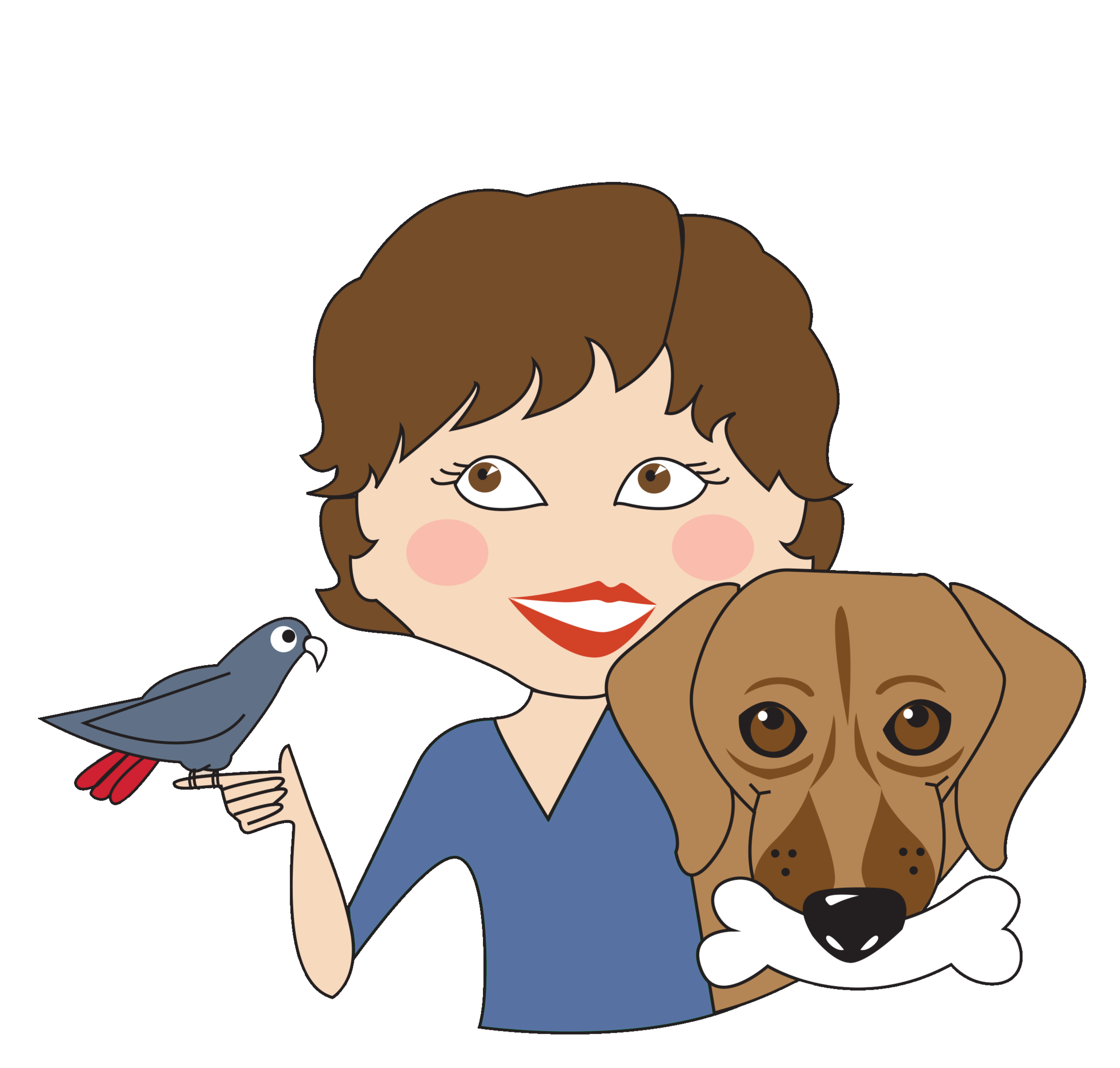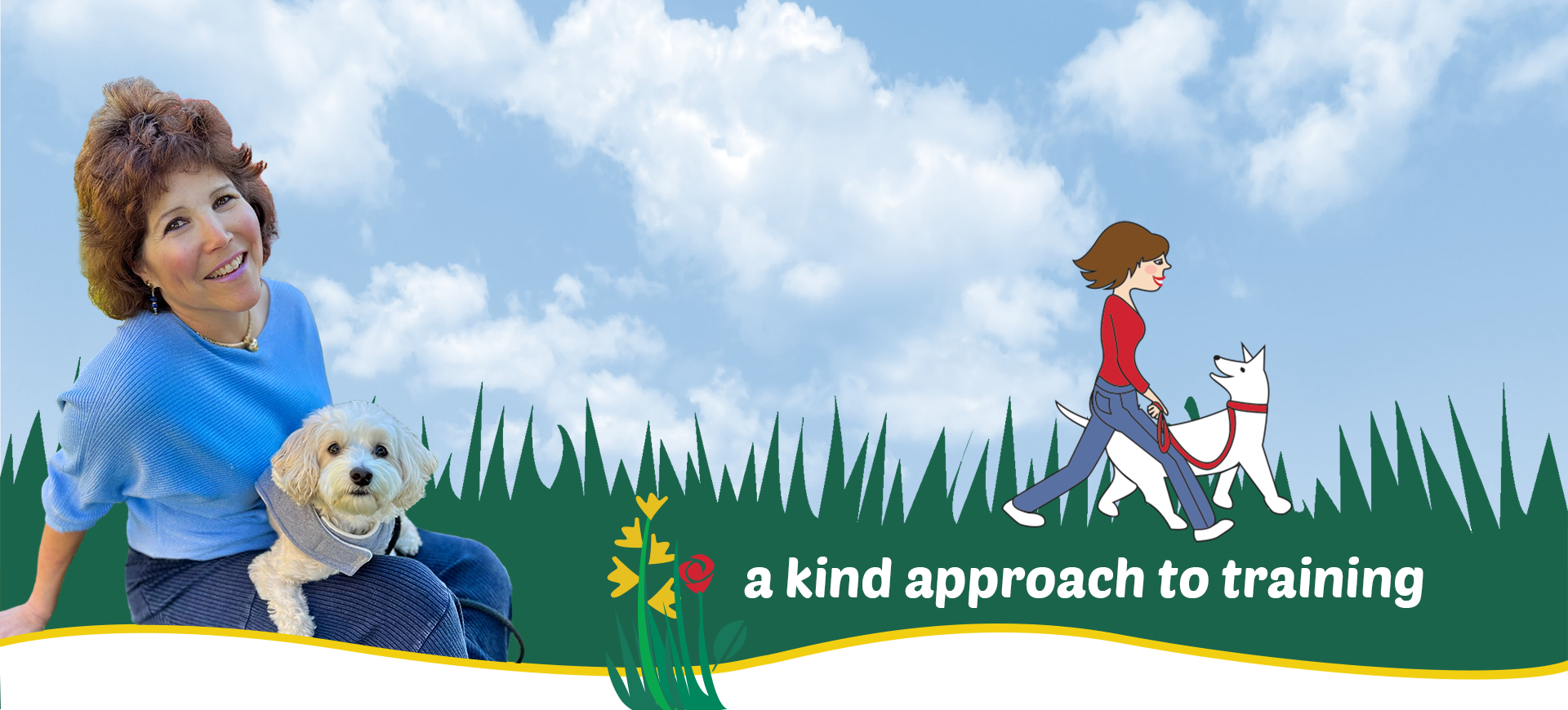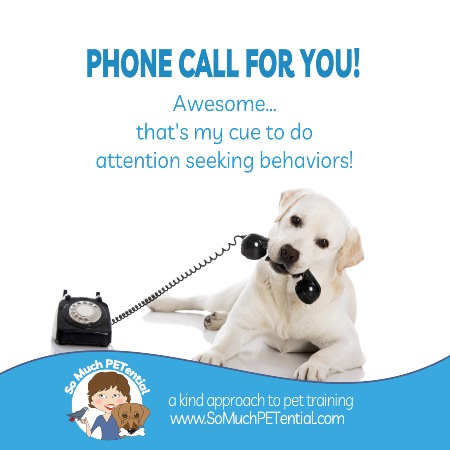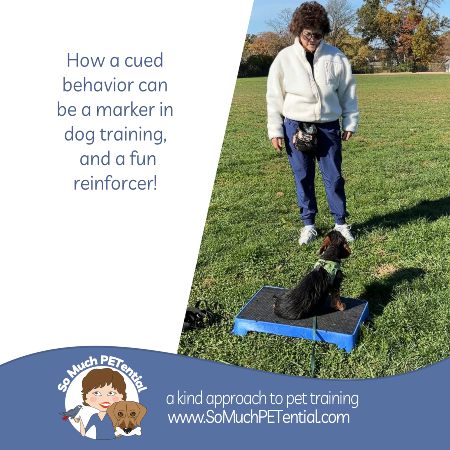Does your dog have ‘bad’ habits that you’d like to stop?
It is a common question.
The first thing I want to remind you is that, when it comes to thinking about what your pet does as either ‘good’ or ‘bad’, that is a pretty subjective way of seeing behavior. Those descriptions are your interpretation as the observer; but really, all your pet is doing is what he has learned works for him to get a need or want met. He learned that from the consequences of past experiences doing that behavior. It becomes ‘habit’ when it becomes an ingrained tendency over time.
A few examples of bad habits in dogs that people want to stop include pawing people who are sitting at the dinner table, barking at people who are ignoring them, barking/jumping/running in circles when the leash comes out.
In each of those scenarios, the dog habit may be seen as ‘bad’, however, really they are instances where the dog has simply practiced over and over doing a behavior or set of behaviors in order to get a consequence he values. Pawing at people sitting at the dinner table may get the dog attention and treats. Barking at people also could get attention or a treat or an opportunity to play. Barking/jumping/running in circles when the leash comes out gets leashes attached which gets outdoor walk time.
Remember, your dog’s habits are simply behaviors that have proven to work over time to get him what he values.
So, to STOP those behaviors, first STOP your way of thinking. Focus instead on what would be acceptable behaviors (from your standpoint) that your dog can do instead, in that moment and in that circumstance, and build lots of value for that choice.
Ask yourself, *when* I sit at the kitchen table, what could I like my dog to *do*? Preferably the answer to that question is a behavior that your dog already knows. If not, then spend time teaching your dog to do that behavior fluently outside of the situation of your sitting at the table. Teach it with reinforcers that your dog values. Practice it in a variety of situations. Then practice it with duration. And then, add in your asking your dog to do that behavior when you sit at the table and BEFORE the barking/pawing behavior begins.
Ok, so you need to have some attention on the unwanted behavior because to modify behaviors, it is important to have a plan in place to prevent the unwanted behavior from getting practiced as every practice has the potential for putting a deposit into that reinforcement bank for that behavior. And, if your plan has a failure (it happens), then do all that you can to avoid your dog from getting reinforcement from the behavior.
In my house, it could be said that Dawson has a bad habit of getting onto the blue chair and looking at what is on the counter next to it. In the past he has found some fun and tasty finds on there. For me, my solution has been to move the chair a little further away so that he can not reach the counter because other than that, I don’t mind his being on the chair.
In the example above, before you have taught your dog what you want him to do, you may need to have your dog in another room or give your dog a chew toy or food activity toy when you sit at the table. In fact, you may decide that those options work better for you. If your dog is engaged in chewing a toy or trying to figure out a puzzle, then he IS NOT, pawing/barking at you. Your dog’s needs were still met.
The world is good.
